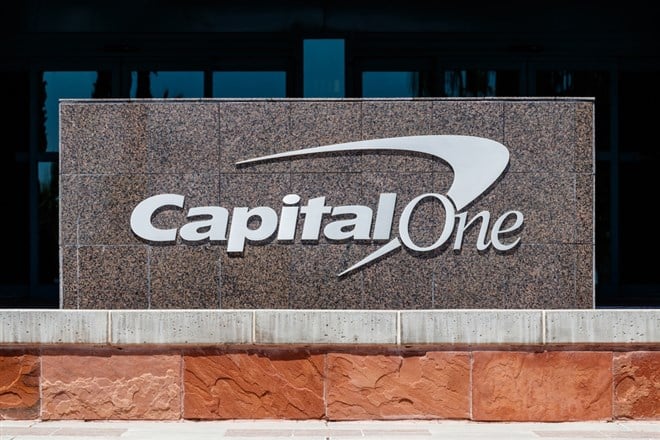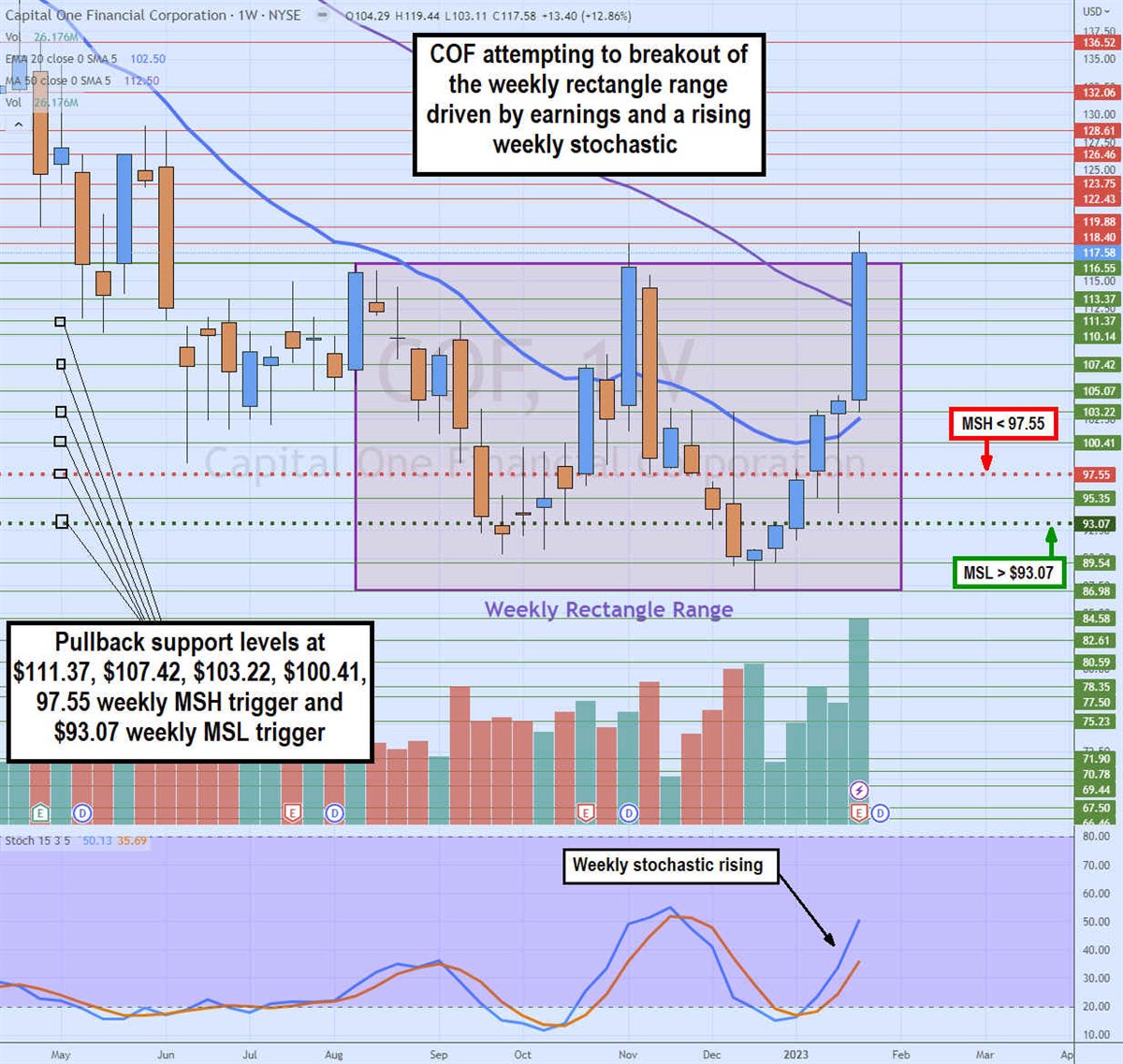
Financial services holding company Capital One Financial Co. (NYSE: COF) stock has been hit due to its exposure to subprime borrowers. As the economy contracts amidst rising interest rates, middle to lower-income consumers tends to feel the brunt of the financial stress. This is Capital One's wheelhouse demographic.
While credit card debt continues to rise, the Company believes this is part of the normalization since the pandemic, along with other consumer banks and credit card companies like Bank of America Co. (NYSE: BAC), Citigroup Inc. (NYSE: C), and Wells Fargo & Co. (NYSE: WFC).
Capital One is also bracing for the potential for higher delinquencies in the face of a recession. Its loan loss provisions ballooned quickly in its Q4 2022 earnings report. Its competitor Discovery Financial Services (NYSE: DFS), warned in its Q4 2022 conference call that the full-year 2023 net charge-off rate could rise from 3.5% to 3.9%, nearly double the 1.8% charge-off rate in 2022.
December Credit Card Metrics
Its recent December credit card delinquency and net charge-off rates were still below pre-pandemic levels but have risen due to normalization. The credit card delinquency rate rose to 3.43%, up from 2.22% in December 2021 but still below 3.93% in December 2019.
The net charge-off rate rose to 3.57%, up from 1.76% in December 2021 but well below 4.55% in December 2019. Credit card loans rose to $131.6 billion at the end of December, up from $127.7 billion at the end of November 2022.
Earnings Miss
On Jan. 24, 2023, Capital One released its fiscal fourth-quarter 2022 results for the quarter ending December 2022. The Company reported earnings-per-share (EPS) of $2.82, missing consensus analyst estimates of $3.86, by ($1.04). Net income was $1.2 billion versus $1.7 billion in the prior year's quarter.
Total revenues grew 11.4% year-over-year (YoY) to $9.04 billion, falling short of consensus analyst estimates of $9.07 billion. Capital One Founder and CEO Richard Fairbank commented, "We posted strong top-line growth throughout 2022. As a result of our investments to transform our technology and to drive resilient growth, we're in a strong position to deliver compelling long-term shareholder value and thrive in a broad range of possible economic scenarios."
Credit Card Business
The credit card segment had strong YoY growth in every top-line metric in its domestic credit card business. Purchase volumes were up 9% YoY. Ending loan balances rose $22.9 billion, up 21%. Ending loans rose 8% sequentially, and revenues rose 19% YoY, mainly driven by solid revenue margin for purchase volumes. Charge-offs and delinquency rates were below pre-pandemic levels and continued to normalize.
Ballooning Loan Loss Provisions
Capital One's provision for credit losses rose to $2.42 billion, up from $1.67 billion from the prior quarter and $381 million in Q4 2021. The rapid interest rate hikes in 2022 set the stage for impacting new credit card demand and the risk of defaults.
While the Fed is expected to pause its rate hikes at some point in 2023, there is a broad consensus that they will first push the federal funds rate to over 5%. It can set a perfect storm of high inflation, slowing economic growth, high-interest rate, and growing unemployment, all impacting disposable income and further impairing consumers' ability to repay credit card debt.
The market will eventually decide if investors are too paranoid or not paranoid enough over potential loan losses in 2023. The MarketBeat MarketRank™ Forecast gives Capital One Financial 3 out of 5 stars with a 4.1% upside price target as insiders sold $2.76 million of stock in the last quarter.

Weekly Rectangle Breakout
COF has been in a weekly rectangle range since peaking at $116.55 in August 2022 and hitting a low of $86.98 by December 2022. Shares triggered a market structure low (MSL) breakout above $93.07 that shot through the market structure high (MSH) trigger at $97.56. COF tallied for six consecutive weeks to test the $116.55 attempting to break out of the rectangle range. The weekly stochastic is rising through the 50-band.
The weekly 20-period exponential moving average (EMA) rose to $102.50 as shares blasted through the weekly 50-period MA at $112.50. The weekly candle close at $117.58 was the first green candle close above the upper rectangle trend line since August 2022. The question is whether it will continue to rise or retrace after the significant run-up. Pullback support levels are $111.37, $107.42, $103.22, $100.41, and $97.55 weekly MSH trigger and $93.07 weekly MSH trigger.
